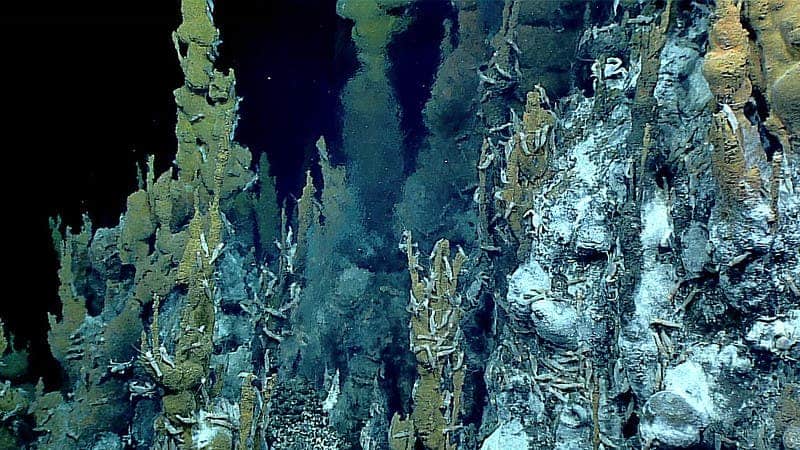Earth is our hearty oasis in the cosmos. Yet our planet also harbors some environments so harsh and hostile that they could easily be mistaken for another planet.

Few spots on Earth appear less Earth-like than deep-sea hydrothermal vents. Along these swathes of the seafloor, the forces of plate tectonics have ripped our planet open, unleashing jets of superheated water that strip chemicals rich in sulfur, iron and other elements from surrounding rock and release them into the ocean.
Yet even these extreme, seemingly inhospitable environments can be teeming with life. Hydrothermal vents host rich ecosystems anchored by microbial communities with exotic metabolic talents. For example, with photosynthesis impossible at those dark depths, many bacteria in and around hydrothermal plumes utilize compounds stripped from rock and mineral as energy sources.
Scientists understand precious little about these plume microbes — their number, variety and how they fit in to wider ocean food webs. Phase Genomics brought its expertise in microbial metagenomics down to these depths, working with scientists who are upending old theories about plume ecosystems and how they interact with the rest of the ocean.
The team, led by research associate Ben Tully at the University of Southern California, used Phase Genomics’ Hi-C proximity ligation and metagenome reconstruction for a sample of plume water from one major hydrothermal vent complex — the East Pacific Rise.
“This approach is so valuable because of how Hi-C linkage works,” said Tully. “We can link different DNA sequences to the same cell of origin: chromosomal sequences, plasmids, viruses. This tells us about host metabolism, active host-virus interactions and so much more.”
Tully’s group — which includes researchers at USC, Caltech, the University of Rhode Island, the Bigelow Laboratory for Ocean Sciences, Stanford University and the University of Alaska — seeks to understand not just the microbial communities around hydrothermal vents, but also how microbial residents change as water moves away from these unique environments.
Past research shows that plume water doesn’t just diffuse into the rest of the ocean. Plume-enriched water can travel in “pockets” up to thousands of kilometers along the ocean floor, according to Tully. By sequencing bacteria in water samples near hydrothermal plumes and at fixed distances away from them, the team wants to capture snapshots of how microbial communities in those packets shift on their journey.
“We could see many types of changes — like some species leaving and others coming in as the plume water travels, and changes in chemical composition due to the metabolic activity of other microbes,” said Tully.
In sequencing this first sample, the team is getting its foot in the door. The sample came from a depth of 2,400 meters, just 300 meters above the seafloor and about a kilometer from the East Pacific Rise. Hi-C found some expected microbes — like Marinobacter hydrocarbonclasticus, which can remove nitrogen from food webs by stripping it from organic compounds and converting it into nitrogen gas.
The plume water also held some surprises, such as a previously unknown member of the Chromatiales clade of bacteria. Based on its genome, this unexpected resident may be able to utilize hydrogen sulfide — a compound toxic to us — as an energy source. A new Plantomycetes microbe can extract carbon dioxide from water to build its biomass, similar to how plants at the surface pull carbon dioxide out of the air. And those are just the initial surprises.
This isn’t just deep thoughts on deep places. Since plume water travels far, its microbes make waves far from their source. Tully and his colleagues want to use the Hi-C data to examine other community qualities, such as the prevalence of viruses and plasmids. These are increasingly important data for understanding overall microbial health and even issues like antibiotic resistance. These metagenomes will serve as a baseline to compare samples from other locations.
“These are whole ecosystems that we knew almost nothing about,” said Tully. “But now we’re starting to learn.”
Plume life may even help in the search for life elsewhere. Scientists use hydrothermal vent communities to predict how life might look on alien worlds. Since these plumes seem full of surprises, they’re not a bad place to start.
This is an article by Dr. Kayla Young. Young received her Ph.D. in Molecular Physiology and Biophysics from Vanderbilt University in 2016. Kayla is currently Chief Operations Officer of Seattle-based genomics startup Phase Genomics.


